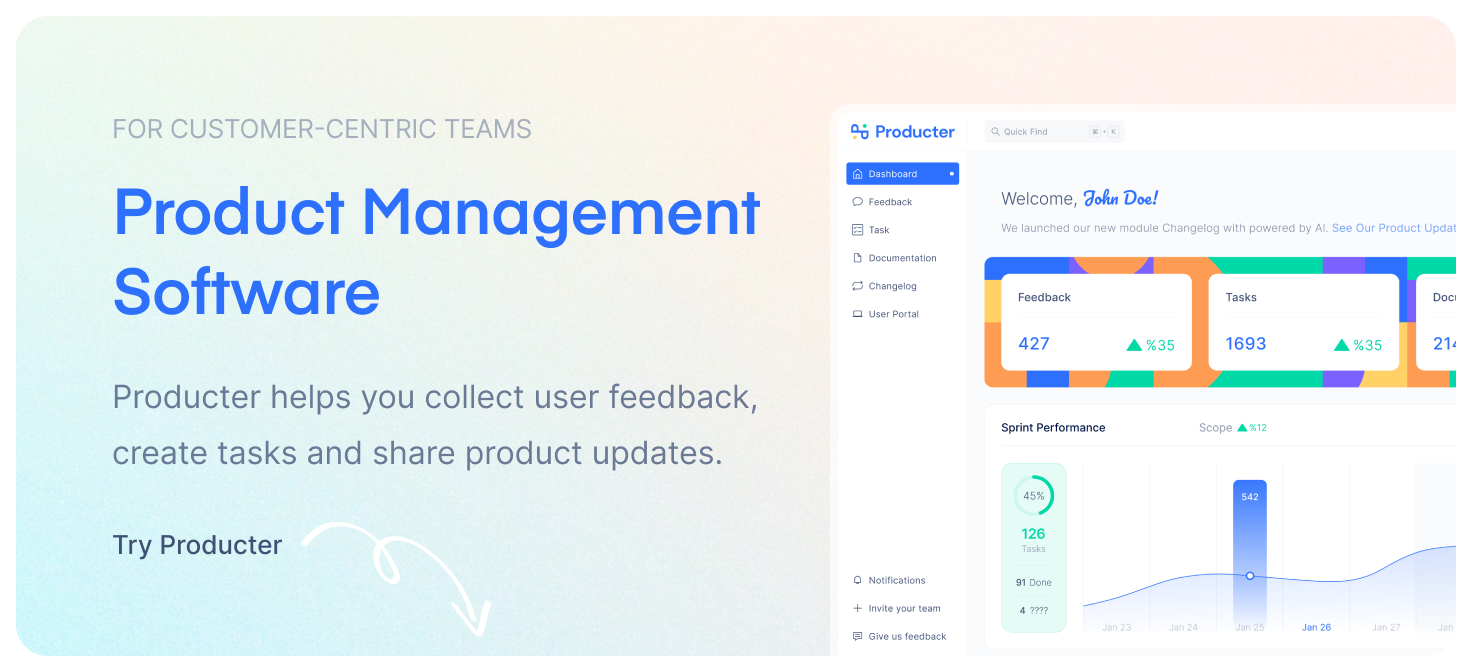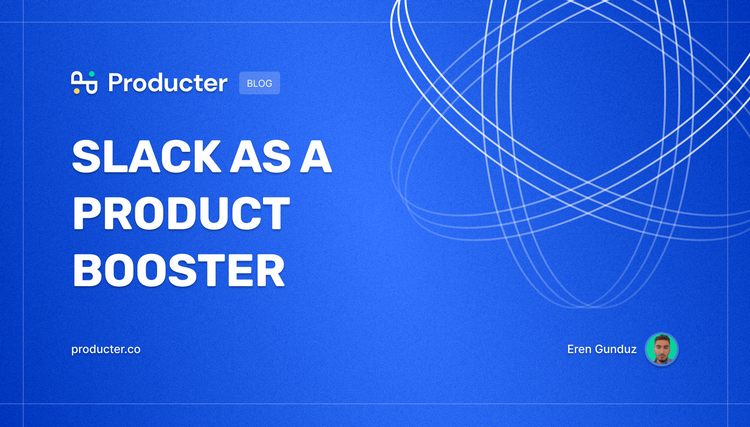Gathering feedback is crucial in the ever-changing software development industry to provide an exceptional user experience and stay ahead of competitors.
However, it's not enough to just collect feedback; it must be done in an organized and coherent manner.
Disorganized feedback collection can lead to unexpected costs and inefficiencies, hindering your software company's progress.
This blog post delves into the reflections of disorganized feedback collection and offers valuable insights to enhance your feedback management process.

1. Inefficiency in Prioritizing Feedback
❌ Problem: Difficulty distinguishing critical issues from minor suggestions
Unstructured feedback can make it challenging to distinguish between critical issues and minor suggestions.
This can lead to an inefficient use of resources, as developers may waste time addressing low-priority issues instead of focusing on more pressing concerns.
✅ Solution: Establish a clear process for categorizing and prioritizing feedback
To overcome this challenge, establish a clear and structured process for categorizing and prioritizing feedback, ensuring that your team can focus on the most important issues first.
Producter is a product management software helping you build products around customer insights.
It provides you multiple feedback collection channels to create an organized system where you can get feedback:
💬 when your users on your product – Feedback Widget
📨 when your teammates sending messages feedback over a Slack message – Slack Integration: Create Feedback from Slack messages
👋🏻 when a user from your Slack community provides feedback from your Slack community - Slack Integration: Create Feedback from Slack messages
🔗 when your users DM'ing or emailing you – Feedback Link
📝 when your users try to find a dedicated place to submit their ideas – Public Feedback Board
By providing several channels across your platform, website or any random message/email, Producter gives you a single platform where you can collect all product feedback.
So you will not need to copy and paste any feedback from one platform to another.
Having an all-in-one product management software backed by customer feedback will help you prioritize the right product feedback and build features your users love.

2. Difficulty Identifying Trends and Patterns
❌ Problem: Hard to spot recurring problems and user experience trends
When the process of collecting feedback is disorganized, it can be a daunting task to recognize recurring issues or discern emerging trends in user experience.
This challenge not only hampers continuous improvement efforts but also makes it difficult to address underlying, systemic problems that might be affecting your software's performance and user satisfaction.
✅ Solution: Implement a centralized feedback management system to track and analyze patterns
To tackle this issue, it's essential to implement a comprehensive and centralized feedback management system.
Such a system allows you to efficiently track, analyze, and identify patterns in customer feedback by consolidating all relevant data in one place.
This level of organization not only streamlines the process of detecting common concerns but also aids in uncovering hidden trends that could provide valuable insights for future product development.
Producter provides you a categorization system where you can identify different kind of feedback and tag them accordingly.
When you collect user feedback in a centralized platform and categorize, it will be easier for you to understand the patterns and underlying customer problems.
By harnessing the power of a centralized feedback management system, you can make data-driven, informed decisions regarding product improvements, ensuring that you're addressing the most pressing issues while also anticipating future user needs.
In turn, this proactive approach on Producter to feedback collection and analysis leads to a better understanding of your customers, an enhanced user experience, and a stronger competitive edge in the market.

3. Lower Customer Satisfaction
❌ Problem: Frustrated and ignored customers
When feedback collection is disorganized, it can result in dissatisfied and ignored customers, which, in turn, can significantly impact customer retention, brand reputation, and overall business success.
The negative impact on customer satisfaction can also cause further harm as dissatisfied customers are more likely to share their experiences with others, potentially leading to a tarnished brand image.
✅ Solution: Use a transparent and efficient feedback collection system to address user concerns promptly
To address this issue, it's vital to use a transparent and efficient feedback collection system that promptly acknowledges and addresses user concerns.
A well-designed feedback system not only encourages customers to share their feedback but also provides them with clear and direct channels to do so.
By establishing this two-way communication, customers feel valued and heard, leading to improved customer satisfaction and loyalty.
Furthermore, by utilizing an efficient feedback collection system, you can ensure that feedback is analyzed and acted upon in a timely manner.
This prompt response shows customers that you take their feedback seriously and are dedicated to improving their experience.
This approach not only enhances customer satisfaction but also helps build a positive brand image, promoting trust and loyalty among customers.
Producter gives you a dedicated User Portal where you can collect user feedback and let your user vote for other ideas/feedback submitted.
User Portal does not only help with collecting feedback, also gives you:
🛣️ Public Roadmap where you can reflect what your team is currently working on,
🖌️ Changelog where you share the news when your users' feedback is ready for them to use!
In summary, building a transparent and efficient feedback collection system on Producter can positively impact customer satisfaction, retention, and brand reputation.
It can also help create a more customer-centric culture within your organization, leading to long-term business success.

4. Ineffective Communication
❌ Problem: Miscommunication within teams
Lack of structure in feedback collection can create communication breakdowns among teams, leading to ineffective resolution of user concerns.
Developers, product managers, and customer support representatives may struggle to understand and address feedback effectively, leading to confusion and missed opportunities for improvement.
✅ Solution: Create a well-defined workflow for handling feedback and clarifying roles
To foster effective communication, it's crucial to establish a well-defined feedback management workflow that outlines clear roles and responsibilities for each team member involved.
This workflow should establish how feedback is collected, processed, analyzed, and acted upon, as well as the timeline for each step of the process.
This transparency enables all team members to be on the same page, eliminating misunderstandings and promoting a cohesive team effort towards addressing user feedback.
By establishing clear roles and responsibilities, feedback collection becomes more organized, leading to faster resolution of concerns and a more efficient process overall.
Additionally, by involving all stakeholders in the feedback process, you can create a more collaborative culture within your organization, enhancing the likelihood of positive outcomes and innovative solutions.
In summary, creating a well-defined feedback management workflow with clearly defined roles and responsibilities can promote effective communication, eliminate misunderstandings, and create a more collaborative and efficient process for addressing user feedback.
By doing so, you can foster a culture of innovation and continuous improvement, leading to enhanced customer satisfaction and long-term business success.
Producter is a product management software with an extremely user-friendly interface with almost zero learning curve.
- You can invite your team or customer-facing teams to your workspace to create a structured and sustainable feedback management across your organization.
- Your teammates will receive notifications when there is a critical feedback that needs to be acted upon. Or, when they created feedback an it's done, they will be informed about the status automatically.

5. Increased Time and Resource Investment
❌ Problem: Time-consuming and resource-intensive feedback management
The process of managing and processing unstructured feedback can be a significant drain on a software company's time and resources, leading to higher operational costs and decreased productivity.
The more time and resources that are allocated to inefficient feedback management, the fewer resources are available for other crucial aspects of software development, ultimately impacting business growth and competitiveness.
✅ Solution: Adopt a structured feedback collection process for better resource allocation
However, adopting a structured feedback collection process can help optimize resource allocation and improve overall efficiency. A structured approach to feedback collection enables you to allocate resources more effectively by prioritizing the most critical issues first.
By categorizing feedback and identifying recurring issues or trends, you can focus on addressing the root cause of problems, rather than just treating the symptoms. This approach leads to more efficient resource allocation, ultimately resulting in better use of time and resources.
In addition to optimizing resource allocation, a structured feedback collection process also promotes greater productivity. By streamlining the feedback collection and processing workflow, you can minimize the time and effort required to manage feedback, allowing your team to focus on other critical tasks, such as product development and innovation.
In conclusion, adopting a structured feedback collection process can have a significant positive impact on a software company's efficiency and productivity. By optimizing resource allocation and streamlining the feedback management process, you can reduce operational costs, enhance productivity, and ultimately drive long-term business success.

6. Missed Innovation Opportunity
❌ Problem: Missed opportunities for improvement from user insights
Inefficient feedback collection can deprive software companies of valuable user insights, including potential new ideas or improvements. This lost opportunity for innovation can result in stagnation and hinder your company's growth and competitiveness in the market.
✅ Solution: Invest in a user-friendly feedback collection system to encourage idea sharing
To promote innovation and maximize user insights, it's essential to invest in a user-friendly feedback collection system. Such a system should provide multiple channels for users to share their ideas and experiences, whether through in-app feedback forms, email, social media, or other platforms. This approach not only makes it easy for users to share feedback but also increases the likelihood that you'll receive a wide range of perspectives and insights.
A user-friendly feedback collection system should also be accessible and transparent, providing users with real-time updates on the status of their feedback and how it's being addressed. This approach helps build trust and rapport with your users, promoting loyalty and positive brand perception.
Finally, by encouraging feedback and acting on user insights, you can foster a culture of innovation within your company. This approach encourages creativity and problem-solving, ultimately leading to better products and a more competitive edge in the market.
In summary, investing in a user-friendly feedback collection system can unlock valuable insights and promote innovation within your software company. By creating accessible and transparent channels for feedback, you can build trust with your users, drive loyalty, and enhance your company's growth and competitiveness.
Conclusion
In conclusion, it's essential to recognize the negative impact that unorganized feedback collection can have on a software company's overall performance. The costs of disorganized feedback collection can go unnoticed and lead to missed opportunities, poor communication, and wasted resources. This approach can negatively impact a company's efficiency, customer satisfaction, and innovation potential.
However, a structured feedback collection process can help companies avoid these hidden costs and stay competitive in the rapidly evolving software industry. A structured approach to feedback collection enables companies to prioritize critical issues, identify trends, enhance customer satisfaction, foster effective communication, optimize resource allocation, and promote innovation.
In today's landscape, customer feedback is more critical than ever. Customers are the driving force behind a company's success, and their feedback provides valuable insights that can lead to better products and services. By implementing a structured feedback collection process, software companies can harness the power of customer feedback and unlock their full potential for growth and success.
To optimize your feedback collection process, start by analyzing your current feedback system and identifying areas that require improvement. Consider implementing a centralized feedback management system, establishing clear roles and responsibilities for handling feedback, investing in user-friendly feedback collection systems, and promoting a culture of innovation and continuous improvement.

🎯 Don't let disorganized feedback collection hold you back.
Take action today and implement these tips to ensure that your company stays ahead of the competition.
By optimizing your feedback collection process, you can unlock your software company's full potential and achieve long-term success in the competitive world of software development.
TL;DR
🚫 Disorganized feedback collection can lead to hidden costs and inefficiencies.
💡 Establish a clear process for categorizing and prioritizing feedback. Use a single platform to collect feedback with Producter.
🔍 Implement a centralized feedback management system to track patterns and trends in customer feedback.
💬 Use a transparent and efficient feedback collection system to address user concerns promptly with Producter's User Portal.
🤝 Create a well-defined workflow for handling feedback and clarifying roles to foster effective communication.
⏰ Adopt a structured feedback collection process to optimize resource allocation and improve overall efficiency.
💡 Invest in a user-friendly feedback collection system to encourage idea sharing and promote innovation.
👍 By optimizing your feedback collection process, you can unlock your software company's full potential and achieve long-term success.
Producter is a product management tool designed to become customer-driven.
It helps you collect feedback, manage tasks, sharing product updates, creating product docs, and tracking roadmap.






